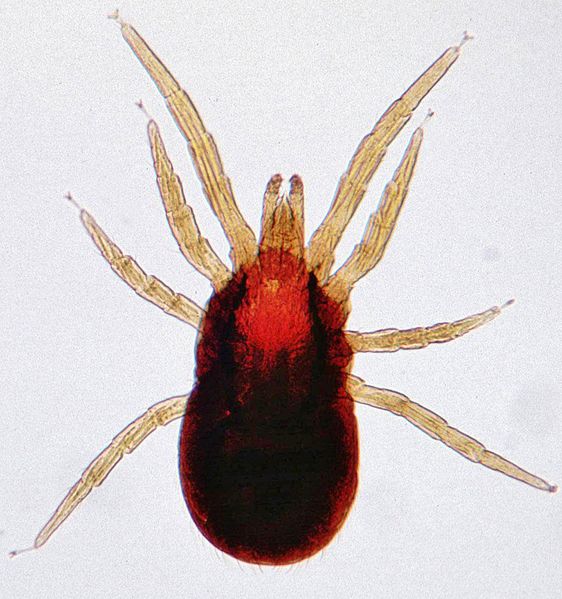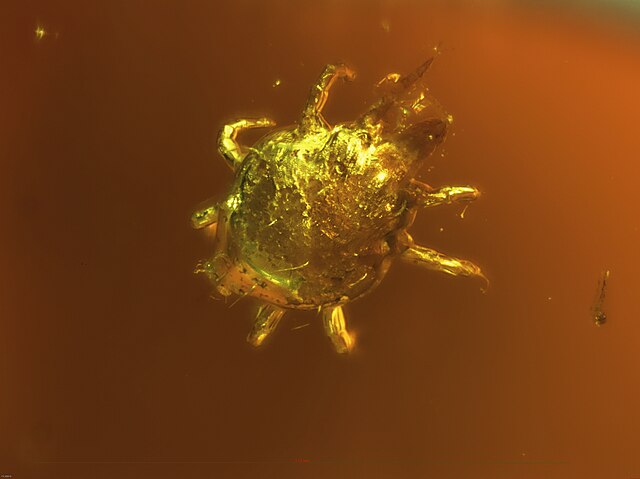Gamasoidosis, also known as dermanyssosis, is a frequently unrecognized form of dermatitis, following human infestation with avian mites of the genera Dermanyssus or Ornithonyssus. It is characterized by pruritic erythematous papules, macules and urticaria, with itching and irritation resulting from the saliva the mites secrete while feeding. These bites are commonly found around the neck and areas covered by clothing, but can be found elsewhere on the body. The avian mite Dermanyssus gallinae can also infest various body parts, including the ear canal and scalp.
Mite bite on chest of patient
Dermanyssus gallinae; a species commonly implicated in causing gamasoidosis
Feral pigeon nests are common sources of avian mites and should be removed as part of the treatment process.
Mites are small arachnids. Mites span two large orders of arachnids, the Acariformes and the Parasitiformes, which were historically grouped together in the subclass Acari. However, most recent genetic analyses do not recover the two as each other's closest relative within Arachnida, rendering the group non-monophyletic. Most mites are tiny, less than 1 mm (0.04 in) in length, and have a simple, unsegmented body plan. The small size of most species makes them easily overlooked; some species live in water, many live in soil as decomposers, others live on plants, sometimes creating galls, while others are predators or parasites. This last type includes the commercially destructive Varroa parasite of honey bees, as well as scabies mites of humans. Most species are harmless to humans, but a few are associated with allergies or may transmit diseases.
Image: Trombidium holosericeum (aka)
Image: Varroa destructor, 1 2019 09 06 19.12.07 ZS P Max UDR (48697155713)
The microscopic mite Lorryia formosa (Tydeidae)
Mite, cf Glaesacarus rhombeus, fossilised in Baltic amber, Upper Eocene







